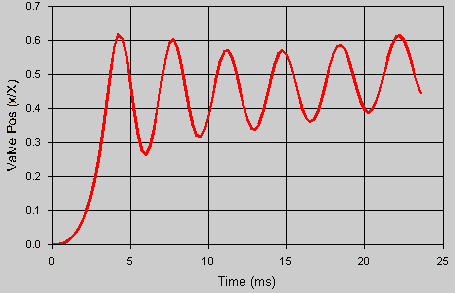Difference between revisions of "Honking"
m (-misleading phrase) |
|||
| Line 1: | Line 1: | ||
When we say a valve "honks", it means that it vibrates open and closed; the cycle is like this: | When we say a valve "honks", it means that it vibrates open and closed; the cycle is like this: | ||
| − | + | # The diaphram/piston unseats, and due to the increase in differential force caused by the "new" area, is pushed back rather quickly. | |
| − | + | # Air pressure in the pilot volume starts to build, as the piston/diaphram moves, compressing it. | |
| − | + | # The momentum of the diaphram/piston keeps it going past the point where the pressures on both sides of the diaphram/piston are equal. | |
| − | + | # The higher pressure in the [[pilot volume]] now accelerates the piston/diaphram back to where it started... and you can folow the steps from #2, but with the pressure in the pilot volume dropping. | |
[[Image:Honk.GIF]] | [[Image:Honk.GIF]] | ||
Revision as of 00:27, 24 October 2005
When we say a valve "honks", it means that it vibrates open and closed; the cycle is like this:
- The diaphram/piston unseats, and due to the increase in differential force caused by the "new" area, is pushed back rather quickly.
- Air pressure in the pilot volume starts to build, as the piston/diaphram moves, compressing it.
- The momentum of the diaphram/piston keeps it going past the point where the pressures on both sides of the diaphram/piston are equal.
- The higher pressure in the pilot volume now accelerates the piston/diaphram back to where it started... and you can folow the steps from #2, but with the pressure in the pilot volume dropping.
(Note the upwards trend in the valve position.)
Honking is often interpreted as a sign that you are using a pilot valve that is too small.
